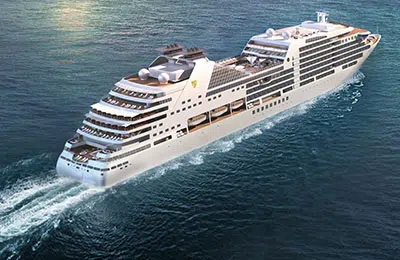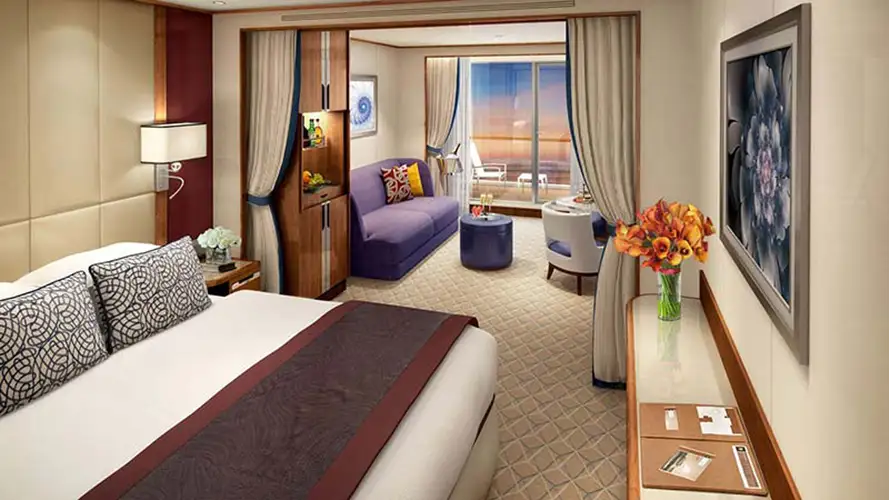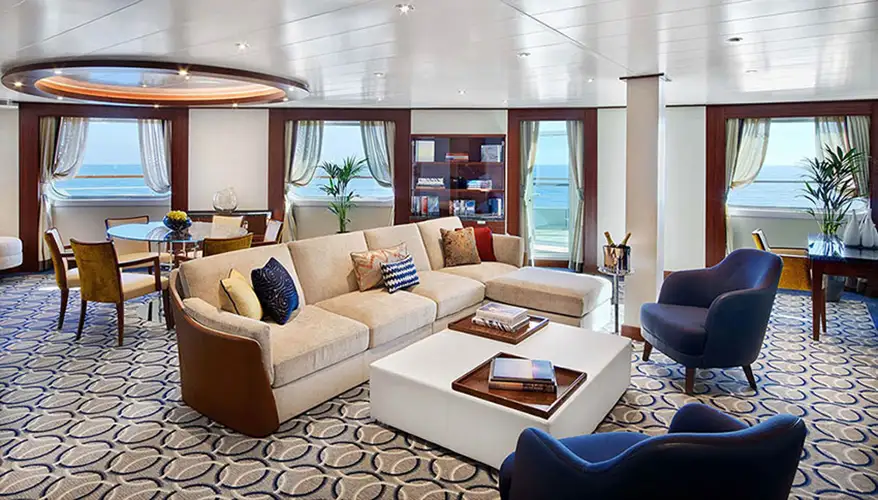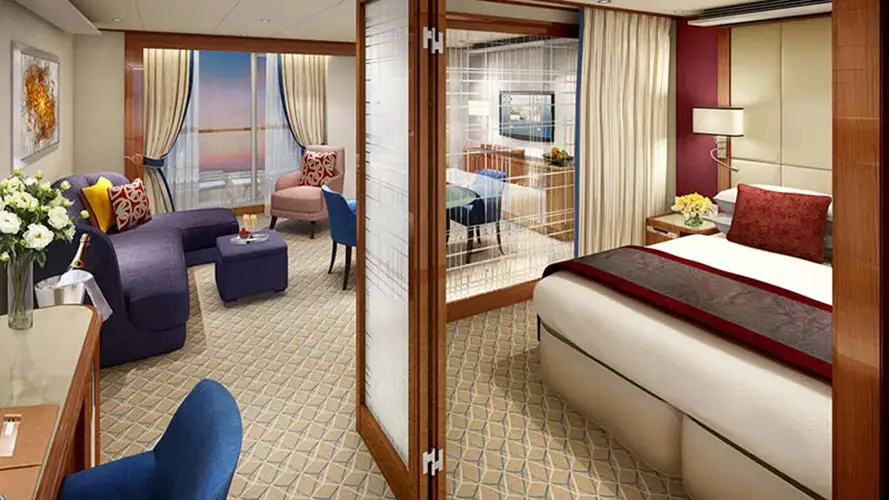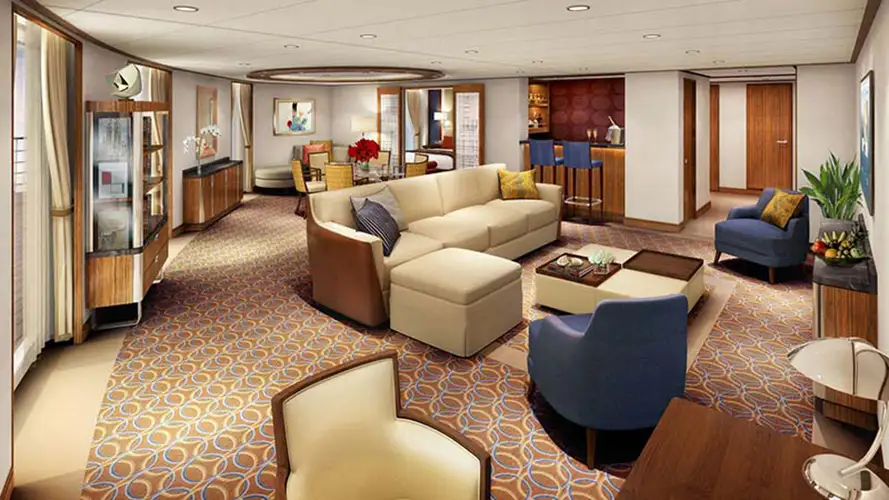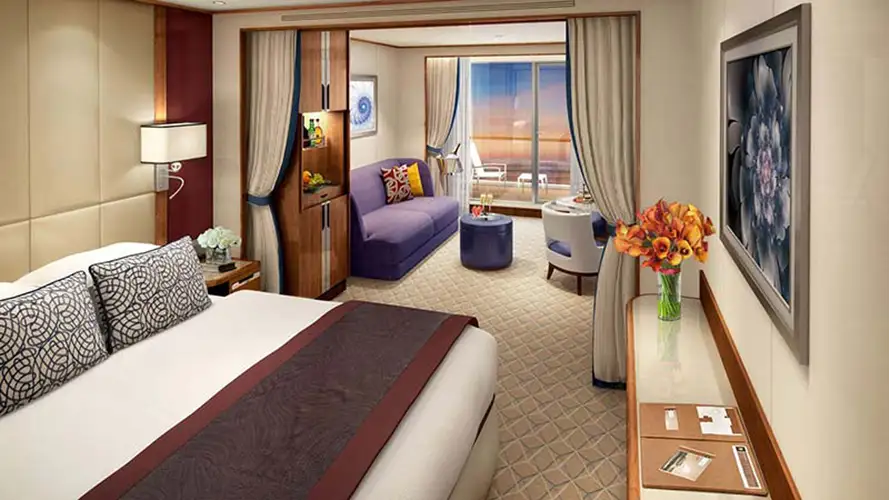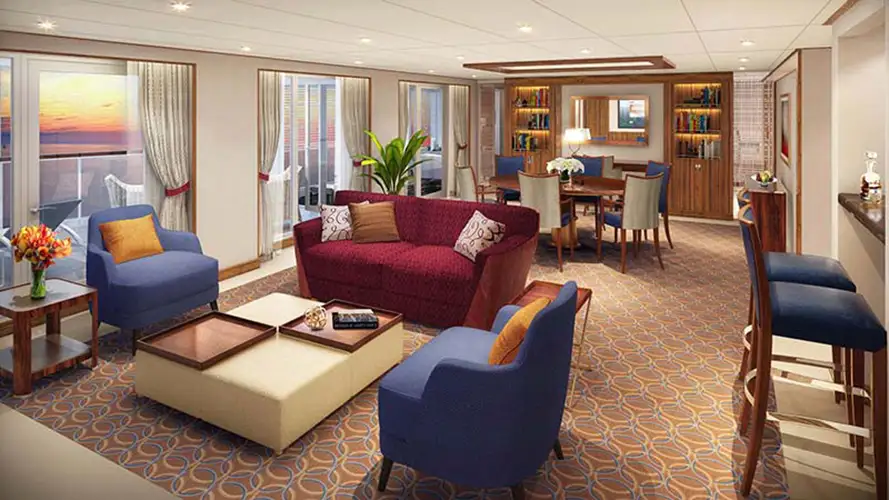Seabourn Greek islands: 14 nights from Dubrovnik with Seabourn Encore
Sep 14, 2025
Croatia, Montenegro, Italy, Albania, Greece, Turkey
Cruise itinerary
Departure Port: Dubrovnik ➞
Landing: Istanbul
-
Sunday, September 14, 2025 - 5:00 PMDubrovnik
-
Monday, September 15, 2025 7:00 AM - 3:00 PMKotor
-
Tuesday, September 16, 2025 8:00 AM - 6:00 PMGallipoli
-
Wednesday, September 17, 2025 8:00 AM - 5:00 PMSaranda
-
Thursday, September 18, 2025 8:00 AM - 5:00 PMZante
-
Friday, September 19, 2025Navigation
-
Saturday, September 20, 2025 8:00 AM - 5:00 PMNauplion
-
Sunday, September 21, 2025 7:00 AM - 5:00 PMAthens
-
Monday, September 22, 2025 8:00 AM - 5:00 PMGytheio
-
Tuesday, September 23, 2025 8:00 AM - 5:00 PMChania
-
Wednesday, September 24, 2025 8:00 AM - 6:00 PMMykonos
-
Thursday, September 25, 2025 8:00 AM - 6:00 PMCesme
-
Friday, September 26, 2025 8:00 AM - 11:00 PMKusadasi
-
Saturday, September 27, 2025Navigation
-
Sunday, September 28, 2025 7:00 AMIstanbul
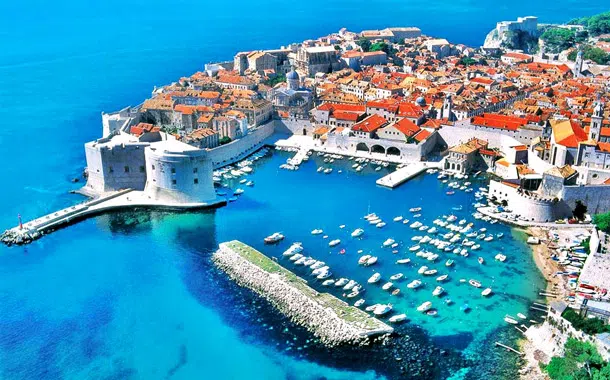
Dubrovnik
Dubrovnik is definitely special. A magnificent curtain wall surrounds marble streets and Baroque buildings exude a pearly light in the Adriatic sun.
Picturesque and artistic, Dubrovnik is a tourist hotspot and port in southern Dalmatia, at the foot of the Srđ mountain. From a historical and cultural point of view, it has been included in the list of UNESCO World Heritage Sites.
Thanks to its beauty and everything it has on offer for tourists, Dubrovnik is one of the most attractive destinations in the Mediterranean, so much so that the city can be visited all year round. In addition to its world-famous architectural heritage, this place has beautiful rocky beaches, pebble beaches and sandy beaches, enjoys a Mediterranean climate and also has lush vegetation. The main pedestrian street, Placa, is a melange of cafes and shops with monuments at each end.
Churches, monasteries and museums adorned with finely carved stone, recall an eventful history and a rich artistic tradition. Beyond the city there is a paradise of beaches, wooded peninsulas and a crystal-clear sea dotted with lush islands.
The city is also known for its delicious cuisine and its infrastructure of hotels for tourists. The city offers a wide selection of first-class restaurants, numerous sport and leisure activities, as well as cultural and entertainment events
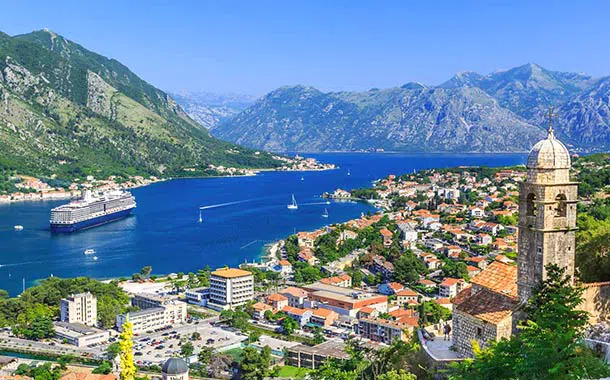
Kotor
The Adriatic Sea penetrates the jagged coast of Montenegro and winds between high mountains until it meets the exquisite and walled medieval city of Kotor.
Along the Adriatic coast of the former Yugoslavia, we find one of the most unique and fascinating European coastal areas, the city hidden in Montenegro, Kotor.
Located at the bottom of a bay, the beautiful medieval city of Kotor is considered a Mediterranean location surrounded by cliffs and an interesting historic wall. The tourist attractions of Kotor are easily reached with a pleasant walk. This small walled city, declared a UNESCO World Heritage Site, has compact dimensions that make it comfortable and easy to visit.
The central part of Kotor was built between the XII and XIV centuries. A historic center surrounded by a rather thick wall, four and a half kilometers long and fifteen meters high. This immense fortified wall reaches the bastion of Sveti Ivan (San Giovanni).
Inside the walls, it preserves an urban network cut into the stone. Its most emblematic work is the Cathedral of San Trifone, built in the 12th century. Inside the church it contains objects and frescoes sculpted during the 14th century. Furthermore, The Orthodox Church of San Nicolas, built between 1902 and 1909 in neo-Byzantine style and that of San Luca (13th century) built in Romanesque and Byzantine style.
Together with the churches, the city includes many palaces that tell its history: the Maritime Museum, located in the Grgurina Palace, a splendid baroque building located in the historic center of the country. The Drago house, with its beautiful Gothic windows, the Prima building, where Renaissance and Baroque lines are combined, the Ducal Palace and the Bizanti, both from the 17th century and the Napoleonic theater in the 19th century.
In Kotor, it is very common to see locals located along the rocky coast in the lower part of the city. In the old part of the area you will find many shops and restaurants that will delight your eyes. This location is the classic ideal city to spend quiet days or for a romantic getaway.

Gallipoli
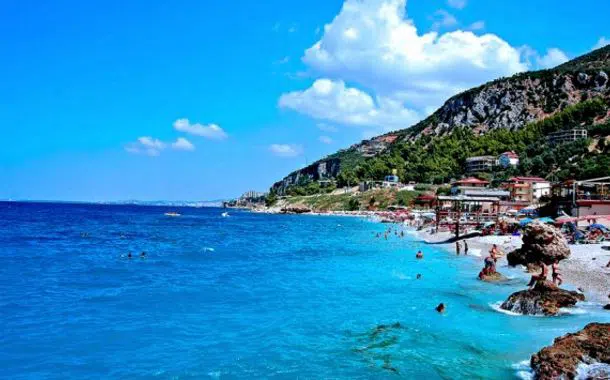
Saranda
Located in the extreme south-west of Albania along the Ionian Sea, opposite the Greek island of Corfu, Saranda is a popular Albanian city, one of the most important tourist cities on the Ionian coast.
The most welcoming and tourist city in Albania, draped along a curved bay with a thin strip of beach. The city developed in antiquity, from the 2nd and 3rd centuries AD, archaeological excavations have revealed the remains in the center of the metropolis.
Despite its lack of popularity, it has a fascinating heritage: a promenade decorated with palm and eucalyptus trees, surrounded by numerous clubs.
The beaches also offer the opportunity to practice numerous water activities.
One of the most beautiful beaches is Kakome Bay north of Seranda: The beach is huge, absolutely stunning.
Blue Eye is a lagoon, so called thanks to its turquoise shades similar to the color of the iris of an eye. At 45 meters deep, the water is incredibly transparent.
Ksamil is a small village near Saranda (15 km) and also has a beautiful beach surrounded by small islands accessible by swimming.
Castle Lekures dating back to the 16th century is located on the hills of Saranda and offers panoramic views of the Ionian Sea. The dominant position of the castle was a strategic point for protecting the city from invasions: on one side the sea and on the other a large tray suitable for cultivation and breeding. The castle has a splendid terrace and a restaurant. It is reachable by car or on foot.
The Butrint National Heritage Park World Heritage by UNESCO, is a natural park, rich in wildlife such as foxes, reptiles, martens, seals, turtles and various birds. The climate is mild and sunny for most of the year. The economy of the city of Saranda is mainly based on agricultural products from the Valtos valley, on the cultivation of mussels from the salt lake of Vouthrotos (Butrint).
In addition to the slow and constant growth of tourism, fishing is another source of wealth.
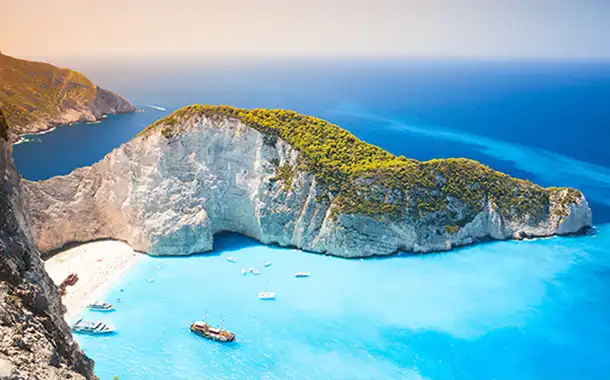
Zante

Nauplion
Gracious Greek city of the Peloponnese, Nauplia is a historic and tourist resort.
This small port has had numerous influences, in particular for the Italian ones. Rich in charisma, in fact, it hides a fascinating past, in particular, it was the first capital of the country after the end of Turkish domination in 1822. Athens then took over. Subsequently occupied by the Byzantines, Franks, Venetians, and Turks, the village preserves a cosmopolitan and multicultural dimension.
The climate of the region is frugal and allows you to experience mild temperatures throughout the year. Sunny days make it a destination accessible in every season.
The Venetian occupation has left numerous traces, such as the citadel of Palamidi which majestically dominates the city. Surrounded by long stone walls and houses with small courtyards, the notable chapel designed by the French architect Lasalle emerges in this place. The influence of this occupation is also found in the cobbled and flowered streets, where beautiful Venetian houses nest. Syntagma Square is especially remembered for its archaeological museum built in the early 18th century.
Nauplia also has several places of worship to visit. Discover the cathedral of Agios Georgios dating back to the 16th century, or its Catholic church of Frangoklissia which was originally a mosque.
Thanks to its privileged location, Nauplia is a good starting point for visiting the villages and archaeological sites such as Epidaurus, Tiryns, Mycenae, or Corinth. Discover the temples and ruins of ancient cities and appointments in archaeological museums that are often present next to these sites.
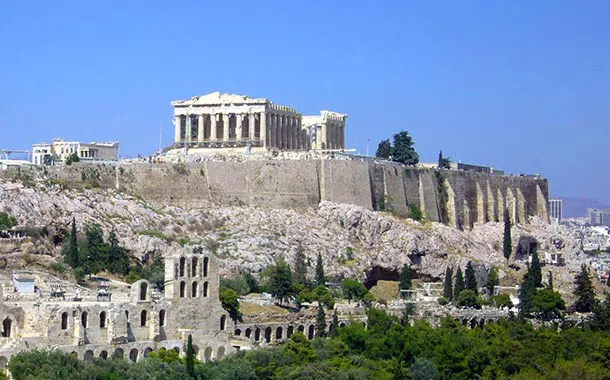
Athens
For many, Athens is a city lived two thousand five hundred years ago. Symbol is the mighty Acropolis which dominates almost every view and itinerary of every visitor, crowned by the iconic Parthenon, stands above the city, watching the sprawling modern metropolis in evolution.
Athens, the capital of Greece, is a city where antiquity and modernity, history and contemporary culture blend in a unique way. Everyone knows that the name of the city derives from the ancient Greek goddess of wisdom and justice. However, few people actually know the legend behind this event. According to myth, Athena and Poseidon, the God of the seas, vied for the right to name the city. Poseidon, to impress the inhabitants, gave them water, while Athena gave them an olive branch.
At first the choice fell on Poseidon, since the citizens considered water the most precious gift. When, once they tasted the water, they discovered that it was salty and not drinkable, they changed their minds and recognized Athena as their patron. One of the most famous historical sites in the city is the Acropolis, a majestic hill topped by ancient Doric temples, including the Parthenon, built in 477 BC. and the Erechtheion, built between 421 and 406 BC. Climbing the Acropolis, tourists can enjoy a breathtaking view of the city and the Aegean Sea. However, Athens is not only history, but also a lively cultural capital. In the Plaka district, located at the foot of the Acropolis, it is possible to stroll through the welcoming streets, visit the traditional Greek taverns and enjoy the authentic atmosphere.
Then there are the numerous cultural activities offered by the numerous museums, galleries and theaters present in the city. Athens is an important port for cruise ships that offer trips to the Mediterranean and beyond. Cruises from Athens allow guests to explore the rich cultural heritage of Greece, including the islands of Crete, Santorini and Mykonos, where you can admire the crystal clear waters of the Aegean Sea and a coast of white houses.
In addition to the Greek islands, cruises from Athens also offer the opportunity to visit other exciting Mediterranean destinations, including historic cities in Italy, Croatia and Turkey. Athens is therefore not only the historical and cultural center of Greece, but also an important starting point for cruises in the Mediterranean, which offers guests the opportunity to immerse themselves in the great history and splendid landscapes of this unique region.
Many still think of Athens as an ancient city that thrived two and a half thousand years ago. Its symbol is the mighty Acropolis, which dominates almost every view and the itinerary of every visitor, and it is crowned by the iconic Parthenon, which rises above the city, overlooking the sprawling and evolving modern metropolis.
Perhaps the most significant change is in the historical centre, which is almost unrecognisable since cars have been banned. This has liberated the area with the most significant archaeological sites, creating the longest, and undoubtedly one of the most splendid, pedestrianised zones in Europe. This huge archaeological park has brought past and present together, returning the cultural and social life of the city to the area around the ancient monuments and surrounding neighbourhoods.
Athens remains a city of contradictions; it is both frustrating and seductive. It is the oldest city in Europe, yet still in a state of transition. It is one of the safest and most vibrant European cities - an intoxicating mix of grunge and grace with an undeniably urban soul.
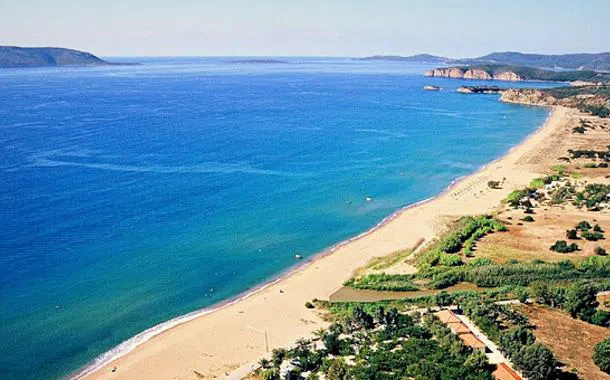
Gytheio
Located south of the Peloponnese, the city of Gytheio (or Gythion) is located north of the Gulf of Lakonia. The cosmopolitan atmosphere, the landscape of a unique island, and the variety of choices are the first impressions of visitors arriving in this paradise, formerly known as the land of the Gods. Gytheio was the port of the ancient city of Sparta and soon developed as the main export center of Laconia. On the hill, north of the village, the ruins of the citadel reside. At the foot of the hill is the ancient theater which still hosts numerous cultural events. Ornamented by various Roman constructions, associated with the mountains and the sea, it gives a prestigious natural landscape. All this wonder is combined with neoclassical buildings, with the addition of the small and charming fishing port. The beaches here are fantastic (many awarded with blue flags), especially those of Mavrovouni and Selinitsa, where you can swim and try different water sports such as windsurfing. Many cultural events take place during the summer, with music festivals, theatrical performances, and attractions for young people. The summer ends with the start of the traditional fair on September 14th which lasts for a week and, subsequently, on September 30th near the port. 10 km from Gytheio, on the road to Areopolis, there are the ruins of Passava castle, built in the early years of the conquest of the Peloponnese by the Franks, constituting the base of their barony. Don't forget to visit Trinissa, a wonderful complex of islands that provide a secluded, relaxing, and natural place.
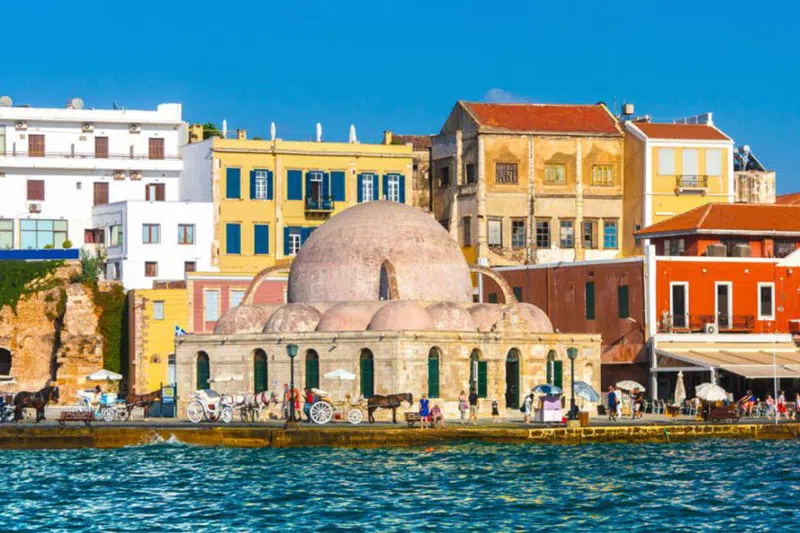
Chania
Chania, the second largest city in Crete, is a jewel overlooking the Aegean Sea, rich in history and natural beauty. Here's what to do during your stop in this city:
1. Walk in the Venetian Port: Start your visit with a walk along the picturesque Venetian port. Admire the Lighthouse, one of the symbols of the city, and visit the Janissaries Mosque.
2. Explore the Historic Quarter: Get lost in the narrow streets of the old quarter, where you can discover craft shops, traditional taverns and colorful houses. Don't miss the opportunity to visit the Archaeological Museum of Chania.
3. Municipal Market: Take a jump to the covered market of Chania, where you can buy local products such as olives, cheeses and spices.
4. Stop in a Local Tavern: Savor Cretan cuisine in one of the taverns on the waterfront or in the alleys of the historic center. Try typical dishes such as dakos, moussaka and oven-baked lamb.
Chania: Crete's Venetian Jewel for Your Cruise
Embark on an unforgettable Mediterranean journey from Chania, Crete's most picturesque city. With its charming Venetian harbor, lighthouse, and labyrinthine Old Town, Chania offers a captivating and romantic setting for your cruise departure. Before setting sail, wander through its narrow alleys, discover ancient ruins, and savor the authentic Cretan cuisine. Chania provides a vibrant blend of history, culture, and stunning coastal beauty, making it an ideal starting point for exploring the Aegean and beyond.
Explore the Aegean and Beyond from ChaniaCruises departing from Chania open up a world of possibilities across the sparkling Aegean and Mediterranean seas. Imagine discovering the ancient wonders of mainland Greece, the volcanic landscapes of Santorini, or the historical richness of Turkey. Whether you seek vibrant island life, serene beaches, or profound historical sites, Chania serves as an excellent launchpad for diverse itineraries. Enjoy the seamless transition from Crete's charming city to the luxurious comfort of your cruise ship, ready for days of relaxation, exploration, and unforgettable moments on the open water, promising a truly enriching voyage.
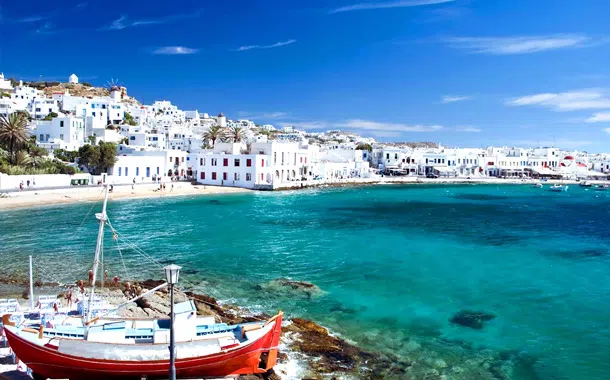
Mykonos
Mykonos is an extremely fun and fascinating place, where the frenetic mix of vacationers, fashionistas and celebrities is magically subdued to the cubist charm of the old town.
Mykonos is famous for being a cosmopolitan destination among the Greek islands and widely recognized as one of the meccas of great tourism. It is one of the most touristy islands in the Aegean Sea. Mykonos tends to be extremely crowded with visitors in July and August. The best time to visit Mykonos is mid-May through June (early in the season, accommodation is much cheaper and it's not that hot), or from September to mid-October.
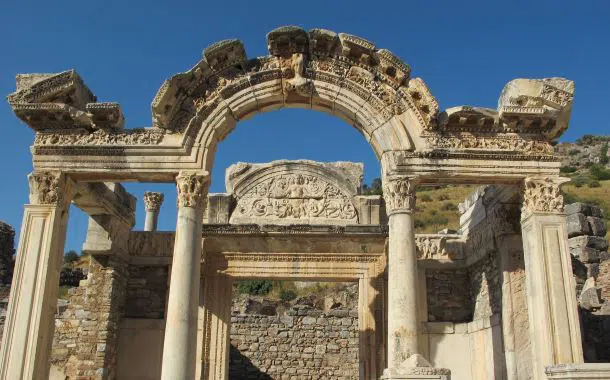
Cesme
Cesme is a renowned resort and spa located 80 kilometers west of the city of Izmir on the western tip of the peninsula.
The most precious city of Izmir. Cesme is located at the very western end of the Urla peninsula and surrounded by the Aegean Sea on three sides.
The country is located opposite Chios at the western end of Turkey. The literal meaning of Cesme in Persian is "fountain", it owes its name to the various Ottoman fountains that dot the city.
It boasts a fabulous natural landscape with unique locations for scuba diving lovers. The most popular diving spots are Fener Island, Yatak Island, Esek Island, and Ildiri Bay. The golden beaches, shallow and fine sand ideal for children. The warm sea, the elegant and welcoming atmosphere.
With a lively nightlife, which starts until the early hours of the morning with beach parties, discos, entertainment shows, and concerts by famous singers, are just some of the entertainment activities offered in this holiday paradise.
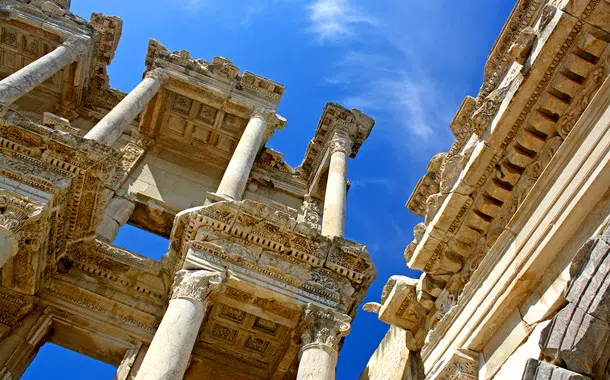
Kusadasi
Kusadasi is one of the main tourist centers of Turkey and offers an excellent environment for an unforgettable holiday.
Located on the west coast of Turkey, 90km south of Izmir, Kusadasi, is reputed to be one of the most beautiful cities in the Aegean Sea, as it is close to important historical sites including Ephesus, Didima, Priene, Miletus and is ideal for tourists. Numerous beaches of fine sand with warm and clear waters, offer a peaceful atmosphere, allow a great variety of services in the water and on the beach. Windsurfing, water skiing, sailing, and beach volleyball are just some of the choices for lovers of dynamism. After the sun during the day, the city awaits superb sunsets. As the sun sets, the attractive cafes and restaurants across the palm-lined avenues fill with sounds and voices. It is a great pleasure to watch the comings and goings of boats and ships accompanied by the panoramic view of the sunset.
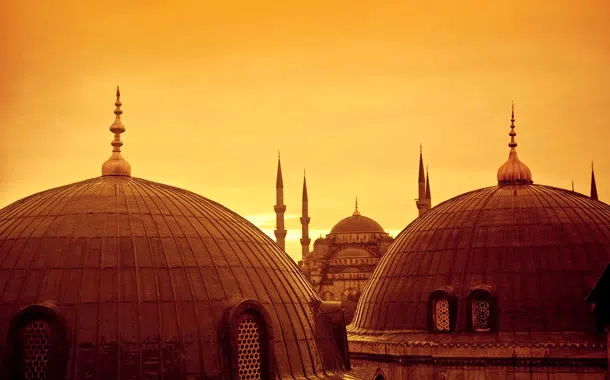
Istanbul
An incredible city, huge, vibrant like few others in the world. Where two continents meet, culture and diversity thrive in a unique architectural setting. Istanbul is hot,and we aren’t talking about the weather. These days there are more restaurants,bars,galleries and clubs around the city than Ottoman mosques(which is not a small feat).
The international fashion and design press has talked about Istanbul to the point of exhaustion; the sense of age that fell over the city once the Ottoman empire disappeared, has been replaced by a sense of energy and innovation not seen since the times of Suleiman the Magnificent.
